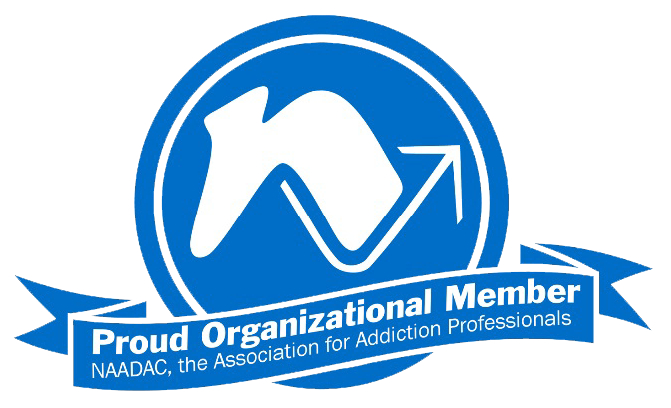-
GeneralGeneral
-
Screening, Brief Intervention and Referral to Treatment Homepage


Welcome to the Screening, Brief Intervention, and Referral to Treatment (SBIRT) course. This course provides you with the essential skills required to effectively identify, refer, and treat patients with substance use disorders and introduces a public health approach to substance use disorders. SBIRT is used to identify and deliver appropriate interventions for persons with existing substance use disorders and those at risk of developing a substance use disorder. This course also provides insights into addressing the stigma surrounding substance use, the screening process for high-risk behavior, delivery of brief interventions, and referral to treatment and includes an optional module that focuses on implementing SBIRT in a clinical care setting.
This Screening, Brief Intervention course has adopted learning resources from the Association of American Medical Colleges (AAMC) and John Hopkins University.
The course was designed by Cyrille Adam, B.A, BA, Ed; Eduardo Bianco, MD; Hugo Andres Rojas Aldieri, MD, MSc, DiplE; Pablo Baldiviezo Rodriguez, MD, DiplEd; Reisha Narine, BSc, MSc; Carolina Bustillos Ballivian, MD, DiplEd; Rhonda Prudent, BSc; Sara Wildman BSc and Sherian Bachan BSc, MSc.
For publications on NextGenU.org’s courses’ efficacy, see NextGenU.org’s publication page. Subscribe to our newsletter to be notified of future updates and new courses and to be part of our community.
There are 5 modules to complete, including 1 optional module, which provides an introduction to:
- Introduction to SBIRT
- Motivational Interviewing Techniques
- Screening
- Brief Interventions
- Referral to Treatment
- Implementing SBIRT in Your Practice (Optional)
The completion time for this course is estimated at 47.2 hours, comprising 8 hours of learning resources, 24 hours to study content and assimilation, and 16 hours of participating in learning activities and quizzes to assist you in the synthesis of learning materials. This course is equivalent to 1 credit hour.
This course requires the completion of all activities. At the end of each module, there is a practice quiz of 10 multiple-choice questions. After you’ve completed each lesson, quiz, and learning activity, at the end of the course, you’ll have access to a final exam consisting of 40 multiple-choice questions and a chance to evaluate this course. You will have up to three opportunities to take the final exam and achieve the required score of >=70%. Once you’ve passed that last test, you will be able to download a certificate of completion from NextGenU.org and our course’s co-sponsoring organizations. We keep your personal information confidential, never sell any of your information, and only use anonymized data for research purposes. Also, we are happy to report your testing information and share your work with anyone (your school, employer, etc.) at your request.
Engaging with this course:
This free course is intended for primary health workers, physicians, nurses, medical students, and other health professionals who would like to learn more about the diagnosis, management, and treatment of substance use disorders in primary care settings.
To obtain a certificate, a learner must first register for the course and then successfully complete:- All the reading requirements;
- All quizzes and pass with a 80% with unlimited attempts;
- All reflection activities;
- All discussion forums;
- The final exam with a minimum of 80% and a maximum of 3 attempts;
- The self and course evaluation forms.
To obtain credit:
- Complete all requirements listed above for the certificate; and
- Your learning institution or workplace should approve the partner-university-sponsored NextGenU.org course for educational credit, as they would for their learner taking a course anywhere.
To obtain a degree, NextGenU.org co-sponsors degree programs with institutional partners. To obtain a full degree co-sponsored with NextGenU.org, registrants must be enrolled in a degree program as a student of a NextGenU.org institutional partner. If you think that your institution might be interested in offering a degree with NextGenU.org, contact us.
We hope that you will find this a rewarding learning experience, and we count on your assessment and feedback to help us improve this training for future students.
Follow these steps to take the course and earn a certificate:
- Complete the registration form;
- Take the pre-test; and
- Begin the course with Module 1: Introduction to SBIRT. In each lesson, read the description, complete all required readings and activities, and take the corresponding quizzes.
This course meets nationally approved standards of education developed for the addiction/substance use disorders counseling profession. This course's participants are assured that the continuing education (CE) credits provided will be accepted toward national credentialing by the NAADAC Certification Commission for Addiction Professionals (NCC AP), as well as by many of the individual state licensing/certification bodies in the addiction and other helping professions.
-
Module 1: Introduction to SBIRT

Upon the completion of this module, you will be able to:
- Define "screening," "brief intervention," and "referral to treatment."
- Define the concept of "risky use."
- Describe the spectrum of risky alcohol and drug use.
- Explain the prevalence and consequences of risky alcohol and drug use.
- Describe the prevention paradox.
- Identify the evidence supporting SBIRT.
- Describe the role of the stigma around the SUD.
- Know how to use person-centered language.
- Describe how an effective clinician conducts screening.
- Describe how an effective clinician conducts a brief intervention.
- Describe how an effective clinician conducts a referral.
Approximate time required for the readings for this module (at 144 words/minute): 9 hours and 40 minutes.
Click here to start this module.1 SCORM package, 2 Forums -
Module 2: Motivational Interviewing Techniques
 Upon completion of this module, you will
be able to:
Upon completion of this module, you will
be able to:- Describe the elements and characteristics of MI spirit and why it is effective.
- Recognize OARS as important MI skills.
- Demonstrate how to use OARS (open-ended questions, affirmations, reflections, summaries) as part of SBIRT.
- Recognize ambivalence, change and sustain talk.
- Describe ways to elicit change talk and respond to it.
- Know how to assess importance/confidence/readiness to change with a ruler.
Approximate time required for the readings for this lesson (at 144 words/minute): 11 hours and 39 minutes.
Click here to start this module.1 SCORM package, 1 Forum -
Module 3: Screening
 Upon completion of this module, you will
be able to:
Upon completion of this module, you will
be able to:- Understand universal screening and its relevance.
- Describe SBIRT screening steps, including introducing/normalizing screening for substance use, defining a standard drink, and conducting prescreening and full screening.
- Appropriately select and use screening tools [CAGE; NIAAA single-question prescreen; quantity-frequency prescreen questions; AUDIT; AUDIT-C; single-question drug prescreen; DAST].
- Describe screening considerations focused on specific populations [people under age 21, pregnant women, people with comorbidities, older adult population].
- Discuss non-stigmatizing approaches and adaptations for screening among specific populations.
Approximate time required for the readings for this lesson (at 144 words/minute): 8 hours and 25 minutes.
Click here to start this module.2 SCORM packages, 1 Forum - Understand universal screening and its relevance.
-
Module 4: Brief Interventions
 Upon completion of this module, you will
be able to:
Upon completion of this module, you will
be able to:- Understand what brief interventions are and what they try to accomplish.
- Know what agencies endorse the use of brief interventions.
- Examine some of the evidence for the effectiveness of brief interventions for various substances.
- Raise the subject.
- Provide appropriate feedback.
- Enhance motivation (including the pros and cons).
- Negotiate a plan.
Approximate time required for the readings for this lesson (at 144 words/minute): 4 hours and 43 minutes.Click here to start this module.2 SCORM packages -
Module 5: Referral to Treatment
Upon completion of this module, you will be able to:
- Describe the steps to make a successful referral to treatment.
- Identify the treatment options for alcohol use disorder and opioid use disorder.
- Review the barriers and facilitators to successful treatment referrals.
- Describe what constitutes a warm hand-off.
- Review the evidence for warm hand-offs.
Approximate time required for the readings for this lesson (at 144 words/minute): 6 hours.
Click here to start this module.2 SCORM packages, 1 Forum -
Module 6: Implementing SBIRT in Your Practice (Optional)
Upon completion of this module, you will be able to:

- Describe the process of implementing SBIRT in healthcare settings, including its barriers and facilitators.
- Examine the evidence for the effective implementation of SBIRT in certain contexts and circumstances.
- Apply the implementation process of SBIRT in your own practice.
Approximate time required for the readings for this lesson (at 144 words/minute): 4 hours and 8 minutes.
Click here to start this module.1 SCORM package, 1 Forum - Describe the process of implementing SBIRT in healthcare settings, including its barriers and facilitators.
-
Course and Self Evaluation and Certificate
 In this section, you can provide feedback about this course to help us make NextGenU.org better. Once evaluations have been completed, you will be able to download your certificate of completion.
In this section, you can provide feedback about this course to help us make NextGenU.org better. Once evaluations have been completed, you will be able to download your certificate of completion.

